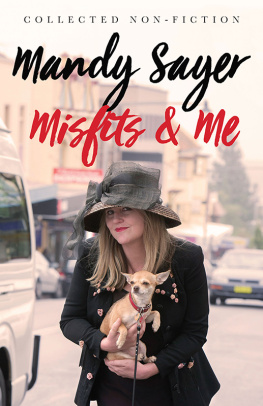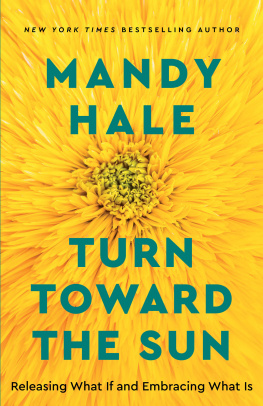PERVERSIONS
Perversions
Deviant Readings by Mandy Merck
Published in the United States in 1993 by
Routledge, Inc.
29 West 35th Street
New York, NY 10001
Copyright 1993 by Mandy Merck
Printed in the United States of America on acid free paper.
All rights reserved. No part of this book may be reprinted or reproduced or utilized in any form or by any electronic, mechanical or other means, now known or hereafter invented, including photocopying and recording or in any information storage or retrieval system, without permission in writing from the publishers.
Library of Congress cataloging in publication data is available
Cloth: 0-415-90791-8
Paper: 0-415-90792-6
to partiality, irony, intimacy and perversity
A great many people made this book possible. Parveen Adams, Jennifer Batchelor, Clare Beavan, Tessa Boffin, Charlotte Brunsdon, Lesley Caldwell, Jane Caplan, Lindsay Cooper, Elizabeth Cowie, Sean Cubitt, John Fletcher, Jean Fraser, Sunil Gupta, Matthew Hoffman, Cora Kaplan, Mary Kelly, Annette Kuhn, Antonia Lant, Susan Lipshitz, Sara Maitland, Biddy Martin, Laura Mulvey, Constance Penley, Jean Radford, Jacqueline Rose, Shirley Samuels, Ann Scott, Carolyn Steedman, Barbara Taylor, Simon Watney, Margaret Williamson and Sharon Willis solicited papers, suggested sources, lent books, read drafts, wrote recommendations or simply kept at me to keep at it. This support is characteristic of a certain kind of intellectual culture, with roots in sexual and socialist politics, which reaches far beyond the academy. For me, a longtime member of what Terry Eagleton has called the lumpen intelligentsia, it has been crucial.
One of the most interesting (and influential) manifestations of that culture was the Society for Education in Film and Television, an independent association of people interested in media studies and the founding publisher of Screen. SEFT perished some years ago in what now seems an endless wave of cuts in radical arts expenditure. But its former officers and members retain my gratitude for choosing me to edit their journal, work with their staff and editorial boards, and in the process receive an invaluable education in contemporary theories of representation. For that education I must particularly thank Jennifer Batchelor, Screen's deputy editor, and my unflaggingly generous teacher and collaborator.
This book was completed in Ithaca, New York, on a fellowship most unexpectedly provided by the Cornell University Society for the Humanities, in its 1991-92 programme on the Politics of Identity. I owe an immense debt to the Society and its director, Dominick LaCapra, its wonderful administrative staff Mary Ahl, Linda Allen, Pam Card and Agnes Sirrine, and the fellows of the academic years 199091 and 199192. I would particularly like to record my pleasure in attending Judith Butler's Society seminar on 'Phantasmatic Identification' and in working with a remarkable group of students busily 'Perverting the Academy'.
The following articles in this book are reprinted from journals and collections: 'The Train of Thought in Freud's "Case of Homosexuality in a Woman'" first appeared in m/f 11/12, 1986, and then in The Woman in Question, edited by Parveen Adams and Elizabeth Cowie (MIT Press, Cambridge, Massachusetts, 1990); 'A Case of AIDS' in Ecstatic Antibodies: Resisting the AIDS Mythology , edited by Tessa Boffin and Sunil Gupta (Rivers Oram Press, London 1990); '"Transforming the Suit": A Century of Lesbian Self-Portraits' in Stolen Glances, edited by Tessa Boffin and Jean Fraser (Pandora Press, London, 1991); 'The Amazons of Ancient Athens' (under the title 'The City's Achievements') in Tearing the Veil: Essays on Femininity, edited by Susan Lipshitz (Routledge & Kegan Paul, London, 1978); '"Lianna" and the Lesbians of Art Cinema' in Films for Women, edited by Charlotte Brunsdon (BFI Publishing, London, 1986); and 'The Fatal Attraction of "Intercourse"' (under the title 'Bedroom Horror') in Feminist Review 30, Autumn 1988. I am grateful for permission to reuse this material.
Finally, my thanks to my publishers at Virago, my copy editor Gillian Beaumont, and most especially to my editor Ruthie Petrie, for her patience, encouragement, exclamatory faxes and a friendship now in its twentieth year.
This collection is titled Perversions for a number of reasons. It was begun in London in the late 1970s, an era of Queer Studies avant la lettre, when the work of Richard Dyer, Mary Mcintosh, Simon Watney, Jeffrey Weeks and Elizabeth Wilson, among others, circulated in places like the National Film Theatre (where Richard curated its first gay film season), the feminist journal Red Rag (where Elizabeth memorably addressed the question of bisexuality), the men's collective Gay Left, and even occasionally in the classroom. (It's worth remembering that Mary Mcintosh's pioneering analysis of the social construction of the homosexual identity dates back to 1968, and the radical British school of sociology known as 'Deviancy Studies'.)
In those days I was employed by the London weekly Time Out, to which I contributed reviews of feminist and gay films, books, plays and other cultural objects. (For some time this included women's tennis: Billie Jean King, Martina Navratilova, et al.) As I became known as one of the few critics then willing to do this, I got commissioned to write longer pieces for journals and books. Thus, in 1976, when the Routledge collection Tearing the Veil was being planned to examine the many representations of the feminine, its editor asked me for an essay on the Amazon in pursuit of what she (and I) confidently assumed to be an image of the lesbian.
This is where another definition of perversion comes in not that of 'deviant sexuality', but of the broader opposition to what is expected or accepted (e.g. 'You're just being perverse'). As I read - or read about Athenian literature, architecture and ceramics (a delightful project which occupied several months after work), it became apparent that the classical notion of the Amazon was very unlike that of the cultural feminists then donning their labyrises. Instead of commemorating a lost community of female love and sovereignty, these images warned of women's ferocity and unsuitability for power. Far from proving the existence of an ancient matriarchy, they seemed to have been constructed to justify an intensification of male dominance. As for 'lesbianism' proper, it simply didn't figure in these ancient evocations of the women warriors. (What they did after the battle, at night, under the wagons, etc., etc., seems to have been a more recent invention.) In broaching these observations, I broke the cardinal rule of essay collections organized around 'identity polities'. Then, as now, the responsibility of the individual (female/black/homosexual/whatever) contributor was to personify the identity assigned and present its claims for consideration. Instead, I argued that the ancient myth of the Amazon had nothing to do with lesbianism, and quite a lot to do with the patriarchal Athenian state.
Nevertheless, my first essay in what a friend now calls 'your killjoy criticism' did get published, but I doubt that it changed many minds. (After I offered its conclusions to the London Matriarchy Study Group, pointing out that Minoan frescoes of women being served by male attendants demonstrated little more in the way of women's rule than an ad for the local steakhouse, I was the theological genealogy of perversion opposes it to conversion, these essays are, I hope, perverse. Still, it is the specifically sexual meaning of that term which is most likely to 'position' this book in the vast output of contemporary cultural criticism.













